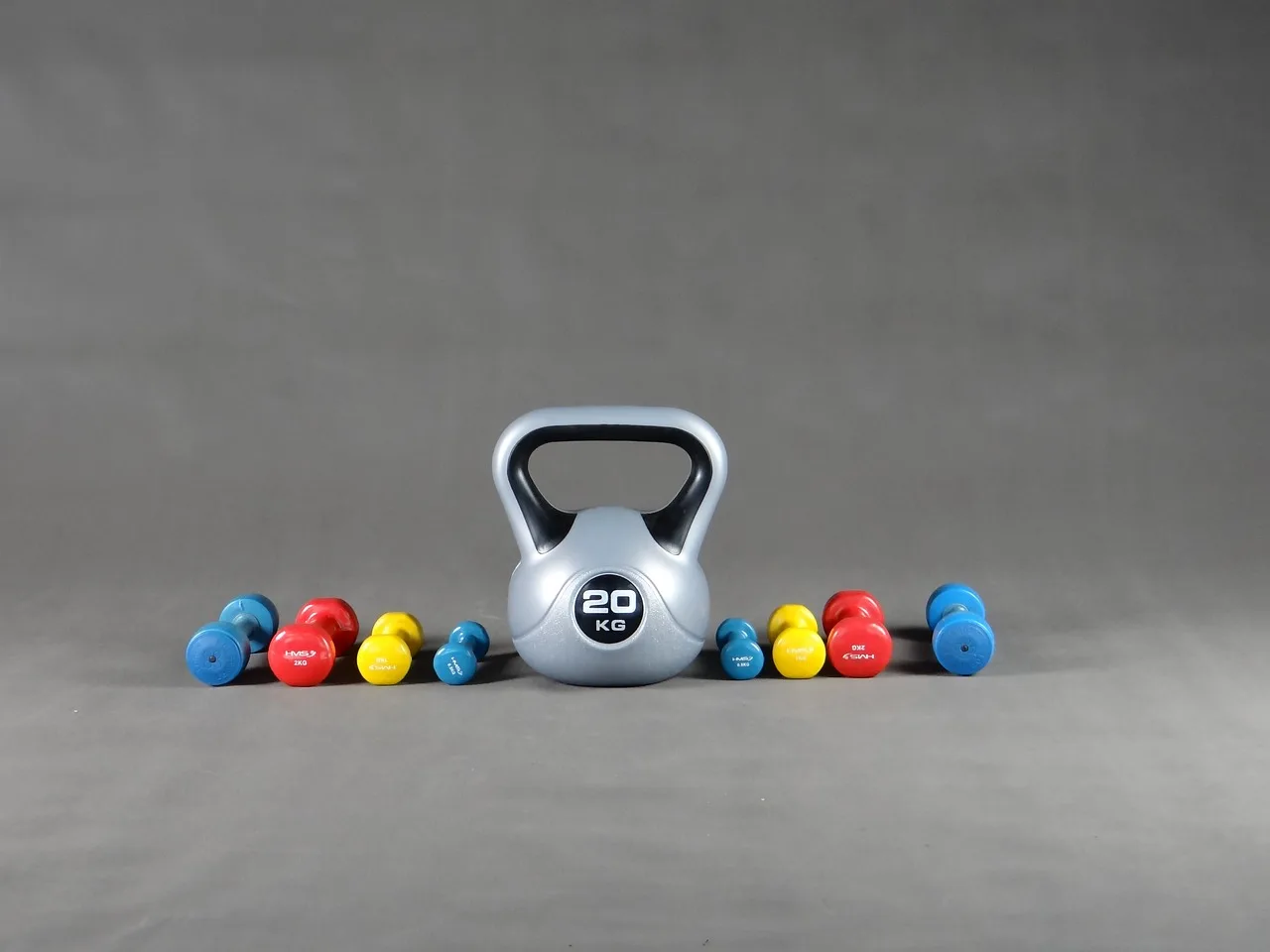Introduction
Strength training is a fundamental aspect of any comprehensive fitness regimen. It not only helps build lean muscle mass, but also enhances bone density, improves cardiovascular health, boosts metabolism, and increases overall functional strength. When it comes to strength training tools, kettlebells and dumbbells are two widely recognized and popular choices among fitness enthusiasts.
Brief overview of the importance of strength training in fitness
Strength training is the practice of using resistance to induce muscular contractions, aiming to increase muscle strength, endurance, size, and power. It involves various exercises designed to target specific muscle groups or engage multiple muscles simultaneously.
The benefits of incorporating strength training into one’s fitness routine extend beyond aesthetics; they contribute to better physical performance in everyday activities and athletic pursuits. By engaging in regular strength training exercises such as weightlifting or resistance-based workouts, individuals can experience improved body composition by reducing body fat percentage while increasing lean muscle mass.
This dual effect not only enhances overall physique but also helps boost metabolism. Increased lean muscle mass leads to higher resting metabolic rates (RMR), meaning that even at rest, the body burns more calories than before.
Moreover, strength training plays a vital role in promoting bone health and preventing age-related conditions such as osteoporosis. By challenging bones through resistance exercises like lifting weights or using other resistance tools like kettlebells and dumbbells, individuals stimulate bone growth and strengthen their skeletal system.
Introduction to kettlebells and dumbbells as popular strength training tools
Kettlebells have a rich history dating back centuries in Russia where they were initially used for weighing crops before becoming an integral part of physical conditioning for soldiers and athletes. These versatile implements consist of a round ball-like structure with a handle attached at the top.
The unique design allows for fluid movements that engage multiple muscle groups simultaneously while challenging stability and coordination. Kettlebells come in a range of weights, typically starting from 4 kilograms (9 lbs) and going up to over 48 kilograms (106 lbs), catering to individuals at different fitness levels.
On the other hand, dumbbells have a long-standing tradition in strength training, with roots tracing back to ancient Greece and Rome. Dumbbells consist of two equal weights attached to a short bar or handle, allowing bilateral exercises that target specific muscles independently.
The traditional design of dumbbells offers versatility in terms of exercise selection and allows for progressive overload by adding or removing weight plates. Dumbbells can be found in various sizes and materials ranging from metal (iron or steel) to rubber-coated variants, providing options for different preferences and workout settings.
Thesis statement
While both kettlebells and dumbbells are effective for strength training, they differ significantly in terms of design, usage, and benefits. Understanding these distinctions is essential when choosing the appropriate tool based on individual goals, preferences, and fitness levels. In the following sections, we will delve into the specificities of their designs as well as their various uses and advantages within strength training programs.
Design Differences
Kettlebells:
The origin of kettlebells can be traced back to Russia, where they were initially used as a tool for weighing crops. Over time, Russian strongmen realized the potential of these weights for physical training and incorporated them into their exercise routines.
Kettlebells gained widespread popularity in the 20th century, not only in Russia but also globally, as fitness enthusiasts recognized their unique benefits. What sets kettlebells apart is their distinctive shape.
They resemble a round ball with a handle attached at the top. This design allows for dynamic moves involving swinging motions that engage multiple muscle groups simultaneously.
The handle’s positioning facilitates exercises that challenge grip strength and promote better overall coordination. Kettlebells are known for their weight range, which tends to be heavier compared to dumbbells.
Available in various increments, kettlebell weights typically start at 4 kilograms (9 pounds) and can exceed an impressive 48 kilograms (106 pounds). The wide range of weights allows users to gradually progress in intensity and effectively train different muscle groups.
Regarding materials, kettlebells are primarily made from cast iron or steel. Some varieties have a smooth surface finish, while others feature textured surfaces that provide enhanced grip during workouts.
Dumbbells:
The historical roots of dumbbells can be traced back to ancient Greece and Rome when they were primarily used as training tools for athletes preparing for events such as discus throwing and wrestling. These early versions consisted of stones or metal objects with handles attached to them. In terms of design, traditional dumbbells consist of two symmetrical weights connected by a short bar or handle in the center.
This design allows for bilateral exercises where each arm is independently engaged during movements like bicep curls or shoulder presses. Dumbbells have stood the test of time due to their versatility and effectiveness in targeting specific muscle groups.
When it comes to weight selection, dumbbells offer a broad range of options. They can be found in various increments, starting from as light as half a kilogram (1 pound) and going up to several hundred pounds.
This wide weight range caters to individuals with different strength levels and training goals. Dumbbells are commonly made from materials like metal, particularly iron or steel.
However, advancements in fitness equipment have led to rubber-coated dumbbells that provide a softer grip and protect floors from damage. Moreover, adjustable dumbbells have gained popularity, allowing users to change the weight by attaching or detaching removable weight plates.
Usage Differences
Kettlebell Exercises
Kettlebells offer a unique training experience with exercises that target specific muscle groups while simultaneously challenging stability and coordination. One of the most iconic kettlebell exercises is the kettlebell swing.
This exercise primarily targets the posterior chain muscles, including the glutes, hamstrings, and lower back. By using a hip-hinge movement pattern, where the hips act as a hinge to generate force, kettlebell swings help develop explosive power and enhance overall athletic performance.
Another highly effective kettlebell exercise is the Turkish get-up. This full-body exercise requires participants to start lying on their backs and gradually move into a standing position while holding a kettlebell overhead.
Throughout this movement, every muscle in the body is engaged to maintain stability and coordination. The Turkish get-up not only improves strength but also enhances mobility and body awareness.
Additionally, kettlebell snatches are an explosive movement that engages multiple muscle groups simultaneously. This exercise involves lifting the kettlebell from between the legs in one swift motion to an overhead position while maintaining control throughout.
Snatches improve cardiovascular endurance, explosiveness, core strength, and shoulder stability. With their dynamic nature, these exercises make kettlebells an excellent choice for individuals seeking challenging workouts that combine strength training with cardiovascular conditioning.
Dumbbell Exercises
Dumbbells offer a wide range of exercises that target various muscle groups and allow for bilateral movements due to their design. One popular dumbbell exercise is bench press—performed lying flat on a bench with dumbbells in hand—to primarily target chest muscles (pectoralis major).
The bench press can be modified by changing grip width or bench angle to emphasize different regions of the chest or involve other muscles like triceps or shoulders. Another effective dumbbell exercise is bicep curls—a classic isolation movement targeting the biceps brachii muscles.
By holding dumbbells in a supine grip and curling them towards the shoulders, bicep curls develop arm strength and aesthetics. Variations such as hammer curls (holding dumbbells with a neutral grip) or concentration curls (isolating one arm at a time) provide additional options for targeting different parts of the biceps.
Moreover, dumbbells can be used for compound exercises like lunges or squats to engage multiple muscle groups simultaneously, including the quadriceps, hamstrings, glutes, and core stabilizers. These exercises promote functional strength and improve lower body stability and balance.
Conclusion
Both kettlebells and dumbbells offer unique advantages when it comes to strength training. Kettlebells excel in movements that require explosive power, dynamic movements involving multiple muscle groups, and improving overall athletic performance. On the other hand, dumbbells provide flexibility in performing bilateral exercises that target specific muscle groups with focused isolation.
Regardless of personal preference or fitness goals, incorporating either kettlebell or dumbbell exercises into a workout routine can yield significant results in terms of strength gains, muscular development, and overall physical fitness. So embrace the diversity of training tools available to you and enjoy the journey towards becoming stronger and healthier through these versatile pieces of equipment.
 Skip to main content
Skip to main content


